| |

Patellar Tendonitis
Prior
to any Sonocur treatment, care must be taken to be certain that the
patient meets the treatment criteria, has no treatment contraindications,
has had the necessary pre-treatment imaging studies, and has read and
signed the proper informed consent.
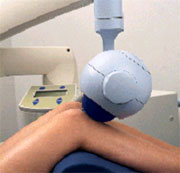 |
|
click
to enlarge
|
|
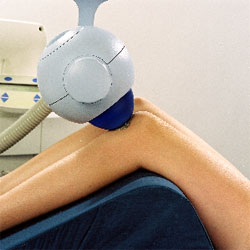 |
|
click
to enlarge
|
|
PROCEDURE
TECHNIQUE
- Place patient on
treatment table in supine position with a pillow under the head.
- Knees should be
flexed 30-45 degrees with a pillow or wedge under the knees.
- Identify trigger
point (sore area near superior or inferior to the patella) by palpation
and mark with pen if necessary.
- Apply transmission
gel over trigger point.
- Swing Sonocur shock
head into place and position over identified trigger point.
- Apply shock waves
initially at lowest energy level (level 1) at 4Hz.
- Move shock head
in small increments until patient reports maximal reproduction of discomfort.
- Accomplish fine
adjustment of shock wave penetration depth by adjusting amount of fluid
in bellows, again with patient feedback to identify maximal trigger
point stimulation.
- Great care must
be taken to precisely identify the exact area of pain. It may require
the use of several shocks (eg.100) to identify this site.
- Depending upon
patient tolerance, gradually increase energy levels to the highest level
that can be maximally tolerated. In patellar tendonitis, this is generally
level two (2) to level four (4). Be certain that the patient does not
become too uncomfortable. It is more important to deliver all the shock
waves to the correct area at a lower energy level than miss the mark
with higher levels because the patient is too uncomfortable.
- Readjust the shock
head position after every 200-400 shocks to precisely treat the maximal
area of tenderness. This is necessary because of the slight positional
movements which may occur during treatment.
- Deliver a total
of 2000 shocks to the affected site after it has been identified.
- Remove shock head
from the treated area and observe the site of application.
- Wipe away the gel.
- Supply patient
with post treatment instructions and return appointment for additional
treatment or physician visit.
HELPFUL HINTS
- If the patient
is exquisitely tender or has significant discomfort, it may be helpful
to initiate treatment slightly away from the point of maximal tenderness.
After 100-200 shocks, slowly readjust the shock head so that the shock
waves are focused more progressively toward area of maximal tenderness.
Slowly advance to the maximal trigger point and complete the treatment.
- In infrapatellar
tendonitis, patients may have either central, lateral, or medial patellar
tendonitis, with a single trigger point near the midline just inferior
to the patella or on either border of the inferior patellar tendon.
This occurs in about 70% of patients. About 30 % of patients will have
medial and lateral patellar tendonitis with separate trigger points
on each side of the inferior patellar tendon. In these cases, each side
of the patellar tendon (medial and lateral) should be treated with 2000
shocks to each of these two trigger areas. Occasionally, one may best
identify which type of involvement the patient has by applying shock
waves transversely across the inferior patellar border to find the areas
which reproduce discomfort, since this may be difficult to delineate
with palpation alone. Quadriceps (suprapatellar) tendonitis most commonly
occurs along one lateral border of the quadriceps tendon insertion.
- Inform the patient
that it is usual to have soreness after treatment and that often the
pain will be worse for a few days until healing begins. Explain that
if multiple treatments are necessary, that subsequent treatments can
sometimes be more uncomfortable than the initial treatment. In addition,
emphasize that healing may take several weeks to occur and that one
should not expect maximal improvement until 12 weeks after the last
treatment.
Sonorex Sonocur
Treatment Protocols are copyright protected.
© 2012 Sonorex. All rights reserved.
The Sonocur® Orthopedic Extracorporeal Shockwave system is available in Canada and other countries where regulatory approval has been obtained. The Sonocur® Basic is FDA approved in the United States for the treatment of chronic lateral epicondylitis (tennis elbow).
© 2012 Sonorex. All rights reserved. By using this service, you accept the terms of our Visitor Agreement. Please read it. The material sonorex.ca is for informational purposes only and is not a substitute for medical advice or treatment for any medical conditions. You should promptly seek professional medical care if you have any concern about your health, and you should always consult your physician before starting a fitness regimen.
|
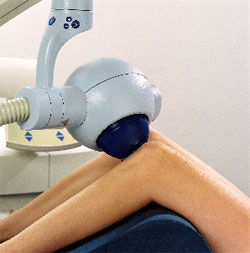 |
|
click
to enlarge
|
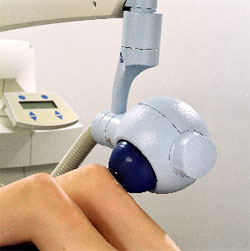 |
|
click
to enlarge
|
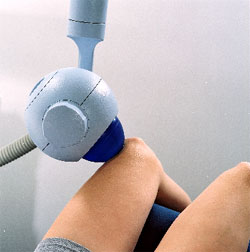 |
|
click
to enlarge
|
|

